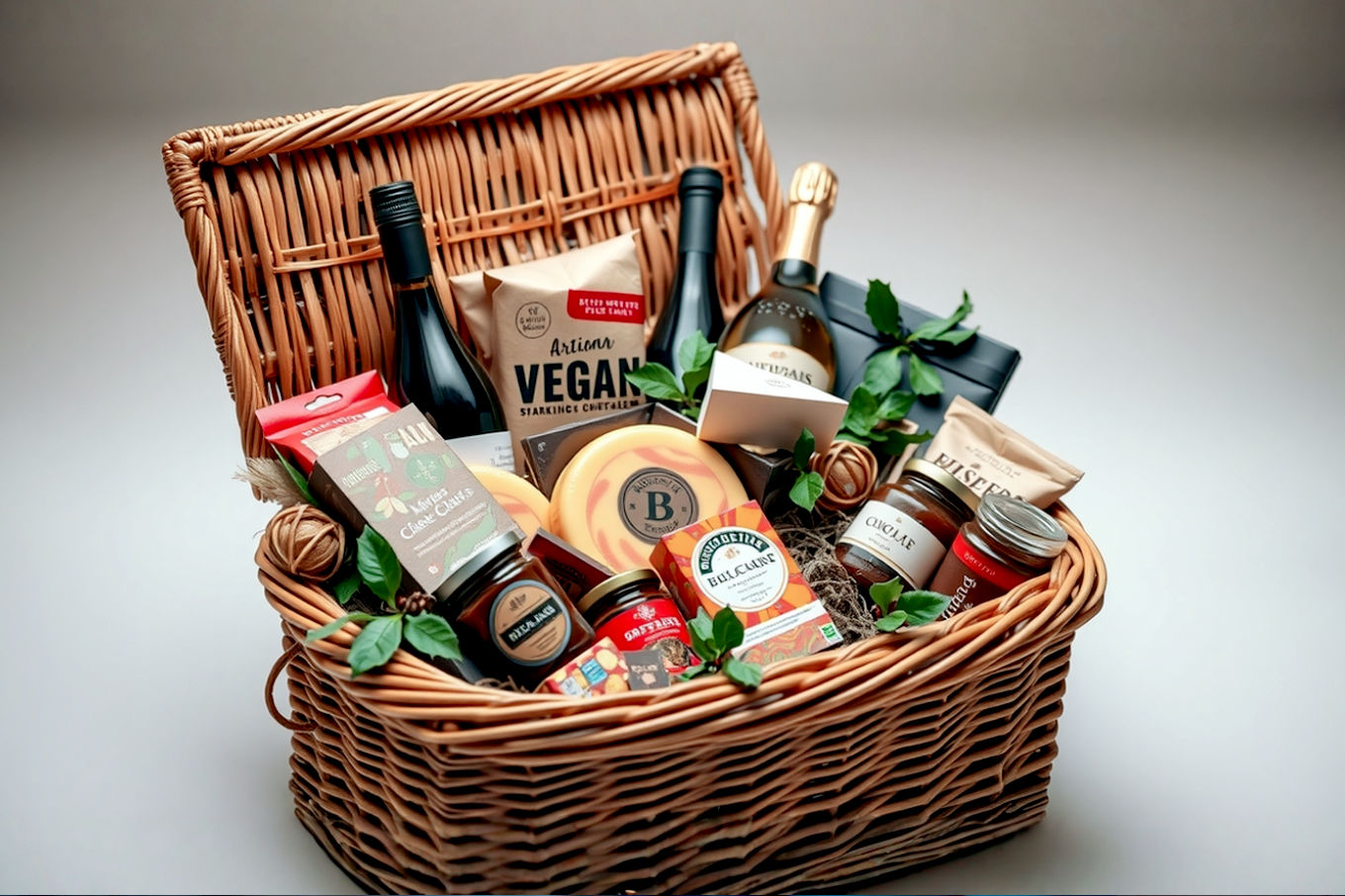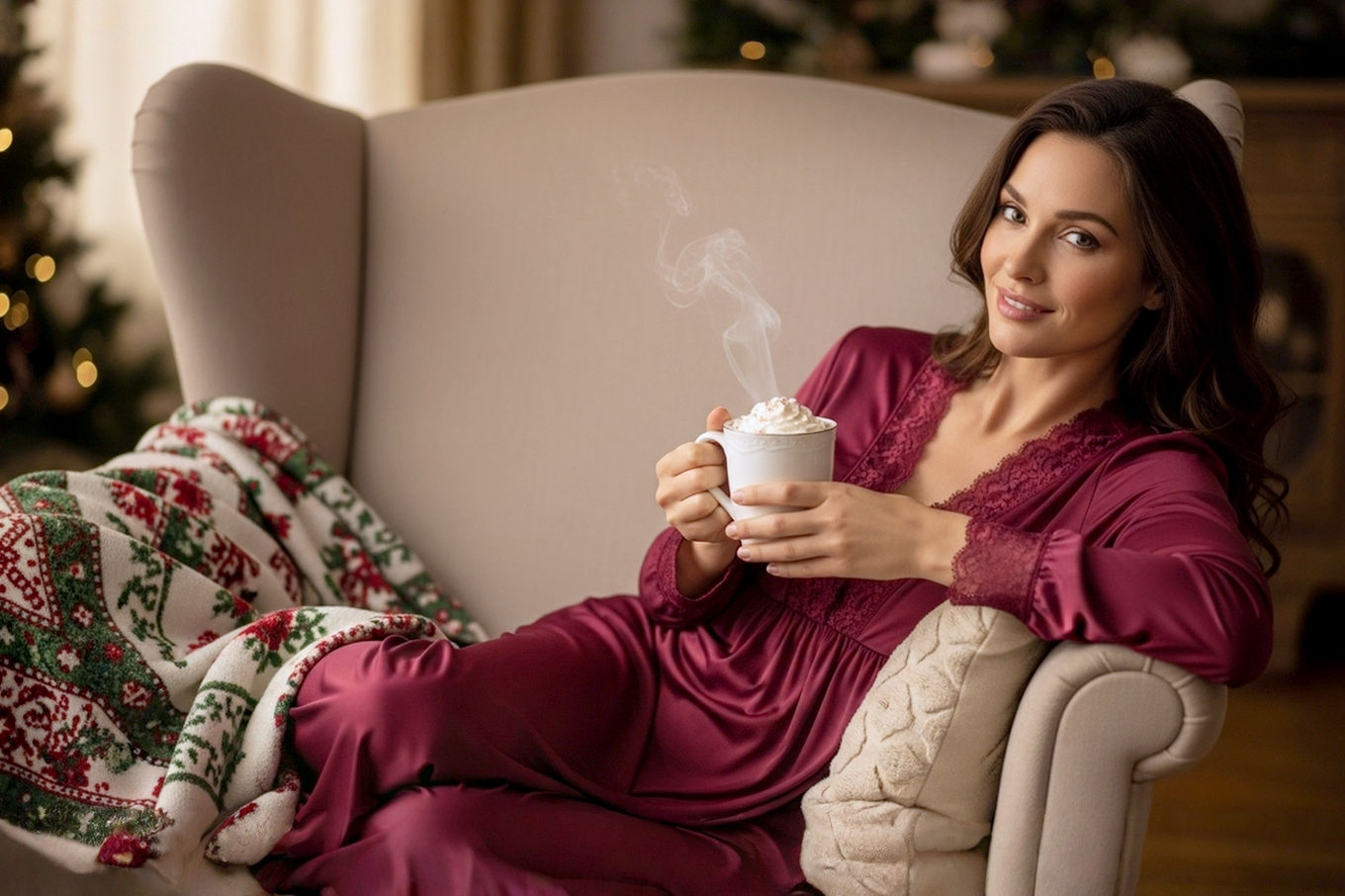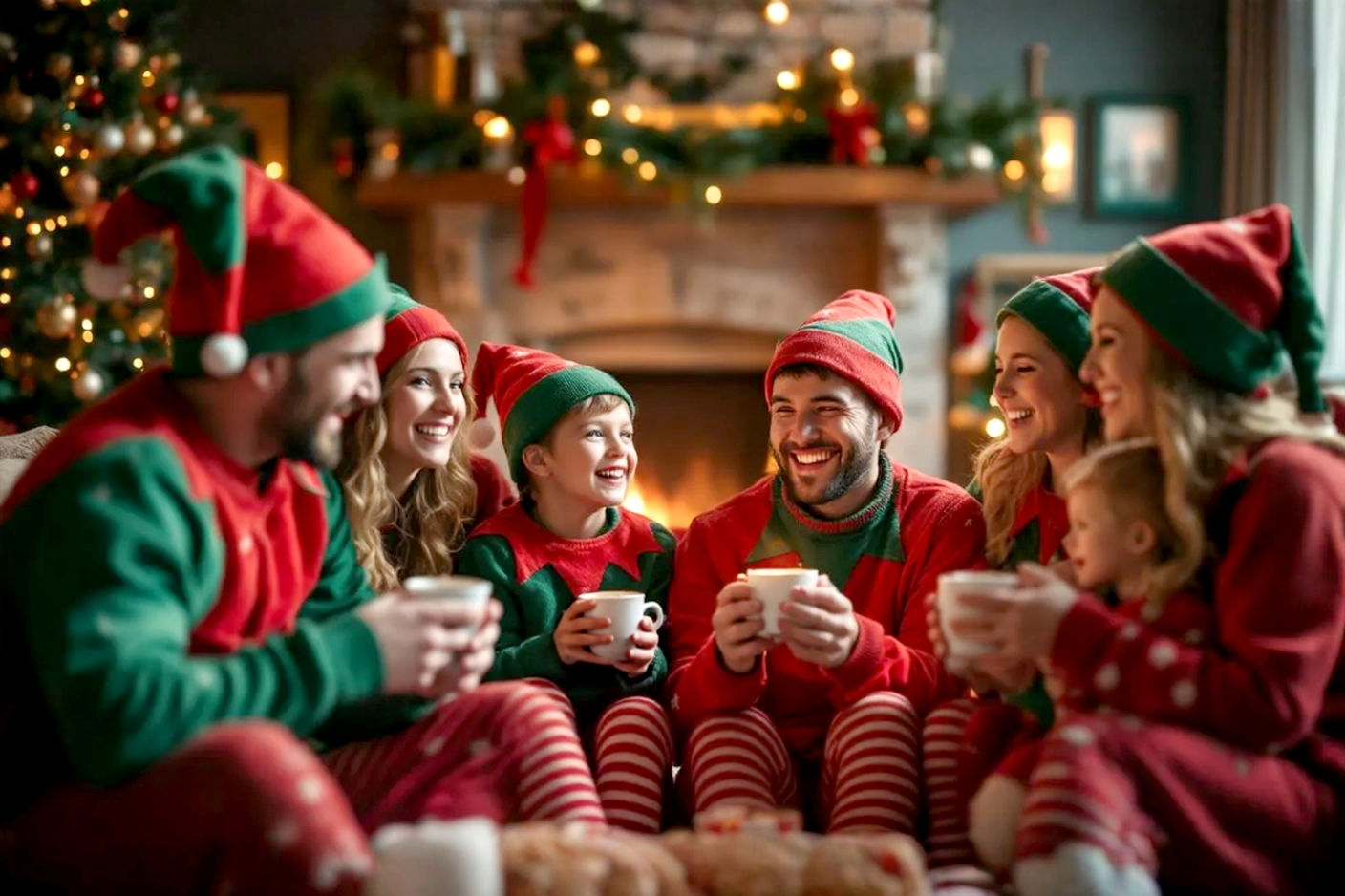This post may contain affiliate links. If you make a purchase through these links, we may earn a commission at no additional cost to you.
The image of a child on a rocking horse, eyes wide with delight, is a classic scene, especially around Christmas. For many, a rocking horse isn’t just another toy; it’s a cherished symbol of childhood, a potential heirloom, and a piece of furniture that adds a touch of timeless charm to any home. But with so many options available—from simple plastic designs to elaborately carved wooden masterpieces—it’s natural to wonder: Is a Christmas rocking horse truly worth the investment? What should you really consider before bringing one home for the holidays?
This comprehensive guide will help you navigate the world of rocking horses, exploring their enduring appeal, the developmental benefits they offer, and the critical factors to look for to ensure you make a purchase that brings joy for years to come.
The Enduring Appeal of the Christmas Rocking Horse
A rocking horse holds a special place in the pantheon of classic toys. It transcends fleeting trends, offering a unique blend of tradition, imaginative play, and physical activity. Its presence often evokes a sense of nostalgia, connecting generations through shared childhood experiences.
More Than Just a Toy: A Symbol of Childhood
From its earliest forms, the rocking horse has been more than just a plaything. It represents freedom, adventure, and the boundless imagination of a child. For centuries, children have mounted these stationary steeds, embarking on imaginary journeys to distant lands, galloping through enchanted forests, or even racing to the rescue. This simple, elegant toy provides a canvas for a child’s inner world, encouraging them to create their own stories and scenarios. It’s a tangible link to a simpler time, a reminder of the magic inherent in play.
The Nostalgia Factor: Connecting Generations
For many adults, the sight of a rocking horse instantly brings back fond memories of their own childhoods or those of loved ones. This powerful nostalgia factor makes a rocking horse a particularly popular Christmas gift. Grandparents might recall their own rocking horse, or perhaps one belonging to their parents, and wish to pass on that same joy. It becomes a bridge between generations, a shared experience that transcends time. Giving a rocking horse for Christmas isn’t just giving a toy; it’s giving a piece of history, a potential heirloom that can be passed down, collecting stories and memories along the way.
Rocking Horses in a Modern World: Still Relevant?
In an age dominated by screens, digital games, and high-tech gadgets, some might question the relevance of a traditional rocking horse. However, its simplicity is precisely its strength. Unlike many electronic toys that dictate play, a rocking horse encourages open-ended, child-led exploration. It doesn’t require batteries, Wi-Fi, or constant updates. It offers a tangible, physical play experience that is increasingly valued in a world saturated with virtual interactions. Children still crave physical activity and imaginative outlets, and a rocking horse provides both in a beautiful, enduring form. Its timeless design ensures it never truly goes out of style, making it a relevant and cherished addition to any modern playroom.
Understanding the “Worth It” Question: Beyond Price
Deciding if a Christmas rocking horse is “worth it” goes far beyond its price tag. It involves considering various forms of value—emotional, developmental, and even potential financial appreciation over time. Understanding these different facets of worth will help you make an informed decision that aligns with your family’s needs and values.
Defining Value: Emotional, Developmental, and Financial
When evaluating the worth of a rocking horse, think about these three key areas:
- Emotional Value: This is perhaps the most significant aspect for many families. An emotional connection forms when a child bonds with their rocking horse, creating cherished memories of imaginative play. For parents and grandparents, the emotional value comes from seeing that joy and knowing they’ve provided a classic, beloved toy. If the rocking horse becomes an heirloom, its emotional worth grows exponentially with each generation that enjoys it. This intrinsic value often outweighs the monetary cost.
- Developmental Value: As we’ll explore in detail, rocking horses offer substantial benefits for a child’s physical and cognitive development. They help with balance, coordination, strength, and spatial awareness. Beyond the physical, they are powerful tools for fostering imagination, role-playing, and emotional expression. The investment in a child’s development through play is, for many, invaluable.
- Financial Value: While most rocking horses aren’t purchased as financial investments, high-quality, well-crafted wooden models, especially those from reputable artisans or antique pieces, can retain or even increase their value over time. They are often built to last for decades, making them a durable asset. However, for mass-produced plastic or plush models, the financial value after initial purchase is typically minimal. The long-term financial worth is primarily relevant for those considering a true heirloom piece.
Short-Term Joy vs. Long-Term Investment: A Balancing Act
The “worth it” question also involves balancing immediate gratification with future potential.
- Short-Term Joy: Any rocking horse, regardless of its material or price, can bring immediate joy to a child. The excitement of unwrapping it on Christmas morning and the initial hours of play are undeniable. If your primary goal is to provide a fun, engaging toy for a few years, then even a more affordable option might be “worth it” for the happiness it brings.
- Long-Term Investment: For those seeking a piece that will last through multiple children, potentially be passed down through generations, or even become a decorative item in the home, a higher initial investment in a quality, durable rocking horse is often justified. These pieces are built to withstand years of active play and retain their beauty. They become more than just a toy; they become a part of the family’s story. Choosing a well-made rocking horse means investing in its longevity and its potential to become a cherished family heirloom.
Ultimately, the “worth it” decision is deeply personal. It depends on your budget, your child’s age and interests, and your family’s values regarding toys and heirlooms.
Developmental Benefits: Why Rocking Horses Matter for Kids
Beyond their aesthetic appeal and nostalgic charm, rocking horses are surprisingly beneficial for a child’s development. Engaging with a rocking horse isn’t just fun; it actively contributes to several key areas of growth, making it a valuable addition to any child’s play environment.
Enhancing Gross Motor Skills and Balance
One of the most immediate and significant benefits of a rocking horse is its impact on gross motor skills and balance. When a child sits on a rocking horse, they instinctively use their core muscles and legs to initiate and maintain the rocking motion. This continuous adjustment helps them develop:
- Core Strength: The act of rocking engages the abdominal and back muscles, which are crucial for overall stability and posture. This strengthens the child’s trunk, providing a solid foundation for other physical activities.
- Leg Strength and Coordination: Pushing off with their feet to get the horse moving, and then coordinating those movements to keep it rocking, builds strength in their legs and improves the coordination between their limbs.
- Dynamic Balance: Unlike static balance (standing still), dynamic balance involves maintaining equilibrium while in motion. The rocking motion constantly challenges a child’s vestibular system (located in the inner ear, responsible for balance and spatial orientation). As they rock, their brain processes the movement, helping them refine their sense of balance and spatial awareness. This is a complex neurological process where the brain integrates sensory input from the eyes, muscles, and vestibular system to keep the body upright and stable. Regular use of a rocking horse helps to fine-tune this intricate system, leading to improved coordination and a reduced risk of falls in other activities.
Fostering Imagination and Creative Play
A rocking horse is a powerful catalyst for imaginative and creative play. It’s a blank slate upon which a child can project their wildest adventures. Without predefined rules or electronic prompts, children are free to:
- Create Narratives: The horse can be a valiant steed, a gentle pony, a racehorse, or even a magical creature. Children invent stories, dialogues, and scenarios, developing their narrative skills. They might be a cowboy, a knight, a jockey, or simply a friend to their horse.
- Role-Playing: Rocking horses naturally encourage role-playing, where children step into different characters and situations. This helps them understand social roles, practice communication, and develop empathy as they imagine the perspectives of others.
- Problem-Solving: Imaginary play often involves overcoming challenges. A child might “gallop” to rescue a princess, navigate a treacherous mountain, or escape a dragon. These self-created scenarios encourage problem-solving and critical thinking within a playful context. This type of open-ended play is crucial for cognitive development, as it allows children to explore ideas without external constraints.
Promoting Sensory Development
While often overlooked, rocking horses also contribute to sensory development, particularly proprioception and the vestibular sense.
- Vestibular Sense: As mentioned, the rocking motion directly stimulates the vestibular system, which is vital for a child’s sense of movement, gravity, and spatial orientation. A well-developed vestibular sense contributes to better balance, coordination, and even focus.
- Proprioception: This is the body’s ability to sense its position, movement, and action. When a child grips the handles, pushes with their legs, and feels the horse move beneath them, they are receiving proprioceptive input. This sensory feedback helps them understand their body in space and how much force to exert. For children who might be sensory seekers, the rhythmic motion and physical engagement of a rocking horse can be incredibly regulating and calming.
Building Confidence and Independence
Mastering the rocking motion and engaging in independent play on a rocking horse can significantly boost a child’s confidence and independence.
- Sense of Accomplishment: Learning to control the rocking motion and make the horse “gallop” gives a child a sense of mastery and accomplishment. This positive reinforcement encourages them to try new things and persevere.
- Independent Play: A rocking horse allows for sustained independent play, where a child doesn’t need constant adult supervision or interaction. This fosters self-reliance and the ability to entertain themselves, which are important life skills.
- Emotional Expression: Sometimes, children use play to process emotions. The physical exertion of rocking can be a release, and the imaginary world provides a safe space to explore feelings.
In essence, a rocking horse is far more than a decorative item; it’s a dynamic play tool that supports a child’s holistic development, making it a truly valuable investment in their growth.
Key Considerations Before You Buy: A Comprehensive Checklist
Choosing the right Christmas rocking horse requires careful thought. With a myriad of options available, from materials to design, it’s essential to know what to look for. This checklist will guide you through the most important factors, ensuring you select a rocking horse that is safe, durable, and perfectly suited for your child and home.
Age and Size Appropriateness: Ensuring a Safe Fit
The most crucial factor is ensuring the rocking horse is the right size for the child who will be using it. An ill-fitting horse can be unsafe and uncomfortable.
Toddlers (1-3 years): Stability and Low Height
For toddlers just learning to walk and gain confidence, safety and accessibility are paramount.
- Low Seat Height: The seat should be low enough for the child to easily climb on and off independently. Their feet should comfortably reach the footrests or the floor when seated. A general guideline is a seat height of around 10-12 inches (25-30 cm).
- Wide, Stable Base: Look for a rocking horse with a broad, stable base that prevents tipping. The rockers should extend sufficiently to the front and back to provide a wide arc of stability. Some models feature anti-tip stoppers at the end of the rockers, which are crucial for preventing the horse from tipping too far forward or backward, especially with enthusiastic rocking. This design feature is a critical safety mechanism, limiting the range of motion to a safe arc and preventing the child from over-rocking and falling.
- Secure Backrest or Seat Design: For younger toddlers, a seat with a backrest or a bucket-style seat can provide extra support and prevent them from sliding off.
- Simple Design: Avoid overly complex designs with small, detachable parts that could pose a choking hazard.
Preschoolers (3-5 years): Growing with the Rider
As children grow, their coordination and strength improve, allowing for more dynamic play.
- Adjustable Features: Some rocking horses offer adjustable footrests or handles, which can extend the usable life of the toy as your child grows.
- Slightly Taller Seat: The seat height can be a bit higher, typically 12-16 inches (30-40 cm), allowing for a more comfortable and active rocking motion.
- Durability: At this age, children are more active and may rock more vigorously. Ensure the construction is robust enough to withstand energetic play.
Older Children (5+ years): Durability and Design
For older children, a rocking horse might serve more as a decorative piece or a prop for imaginative play rather than a primary rocking toy.
- Sturdy Construction: If it’s still intended for active use, it must be exceptionally well-built to handle the increased weight and force.
- Larger Size: The horse will need to be proportionally larger to accommodate their height and weight.
- Intricate Design: For older children or as a decorative item, the aesthetic design and craftsmanship become more important. These might be heirloom pieces.
Safety First: Critical Features to Prioritize
Safety should always be your top concern when buying any toy, especially one designed for active play.
Sturdy Construction and Anti-Tip Design
This is non-negotiable. The rocking horse must be built to withstand repeated, vigorous use without wobbling, breaking, or tipping.
- Anti-Tip Rockers: As mentioned earlier, look for rockers that are designed with stoppers or a wider base to prevent the horse from tipping over if rocked too forcefully. This is a fundamental safety feature. The geometry of the rocker base, specifically its curvature and the extension of the rocker ends, is engineered to create a stable equilibrium point and limit the maximum angle of tilt.
- Robust Joinery: For wooden horses, examine the joints. They should be securely fastened, ideally with dovetail joints, mortise and tenon joints, or strong dowel construction, rather than just screws or nails. These traditional woodworking techniques provide superior strength and longevity, distributing stress evenly and preventing joints from loosening over time.
- Weight Capacity: Check the manufacturer’s specified weight limit to ensure it can safely support your child.
Non-Toxic Materials and Finishes
Children often put things in their mouths, so the materials and finishes must be safe.
- Lead-Free Paints and Stains: Ensure any paints, stains, or lacquers used are non-toxic, lead-free, and child-safe. Look for certifications like ASTM F963 (Standard Consumer Safety Specification for Toy Safety) or EN71 (European Toy Safety Standard). These certifications indicate that the product has undergone rigorous testing for hazardous substances, including heavy metals and phthalates.
- Natural Materials: If choosing a wooden horse, ensure the wood itself is untreated or treated with child-safe, food-grade oils or waxes. For plush horses, check that the fabrics are hypoallergenic and free from harmful chemicals.
Secure Handles and Footrests
These are critical for a child’s stability and control.
- Firmly Attached Handles: The handles should be securely fastened to the horse’s head or neck, able to withstand a child’s pulling and gripping. They should not twist, loosen, or break off easily.
- Ergonomic Design: Handles should be easy for small hands to grasp comfortably.
- Stable Footrests: Footrests should be wide enough to provide stable support for a child’s feet and positioned appropriately for their age. They should be firmly attached and not slip.
Smooth Edges and No Pinch Points
Inspect the entire rocking horse for any sharp edges, splinters, or areas where a child’s fingers could get pinched.
- Sanded and Rounded Edges: All wooden surfaces should be smoothly sanded with rounded edges to prevent splinters or cuts.
- No Gaps: Ensure there are no large gaps or openings where small fingers or toes could get caught or pinched, especially in the rocking mechanism or between joints.
Material Matters: Wood, Plush, Plastic, and More
The material of a rocking horse significantly impacts its durability, aesthetics, and maintenance requirements. Each material offers distinct advantages.
Classic Wooden Rocking Horses: Durability and Aesthetics
Wooden rocking horses are the epitome of tradition and often the choice for those seeking an heirloom piece.
Types of Wood: Oak, Maple, Pine, Birch
The type of wood used greatly influences the horse’s strength, weight, and appearance.
- Oak: Known for its exceptional strength and durability, oak is a very dense hardwood. It has a prominent grain pattern and is highly resistant to dents and scratches, making it ideal for a long-lasting, heavy-duty rocking horse. However, it can be heavier and more expensive.
- Maple: Another very hard and dense wood, maple offers excellent durability and a finer, less pronounced grain than oak. It’s often chosen for its smooth finish and ability to take stains well, resulting in a sleek, elegant appearance.
- Pine: A softer wood, pine is more affordable and lighter. It’s easier to work with but also more susceptible to dents and scratches. Pine rocking horses are a good option for budget-conscious buyers, but they may not last as many generations as hardwood versions.
- Birch: A moderately hard wood, birch is known for its fine grain and light color, making it versatile for various finishes. It offers a good balance of durability and cost-effectiveness.
- MDF (Medium-Density Fiberboard) or Plywood: While not solid wood, these engineered wood products are sometimes used for more affordable wooden rocking horses. They can be stable but are less durable than solid hardwoods and are more susceptible to moisture damage. Always check the core material.
Craftsmanship and Joinery
The quality of the woodworking is paramount for a wooden rocking horse’s longevity.
- Hand-Carved Details: High-end wooden horses often feature intricate hand-carved details, adding to their artistic and heirloom value.
- Smooth Finish: The wood should be impeccably sanded and finished to prevent splinters and provide a pleasant tactile experience.
- Robust Joinery: As mentioned in the safety section, look for strong, traditional joinery methods like mortise and tenon, dovetail, or dowel joints. These mechanical joints, where pieces of wood fit precisely together, are inherently stronger than simple butt joints secured with screws, as they distribute stress more effectively and resist pulling apart under force.
Soft Plush Rocking Horses: Comfort and Cuddliness
Plush rocking horses offer a softer, more inviting experience, often appealing to younger children.
Fabric Types: Faux Fur, Velboa, Corduroy
The exterior fabric determines the horse’s feel and appearance.
- Faux Fur: Provides a realistic, soft, and cuddly texture, often mimicking a horse’s mane and tail.
- Velboa: A soft, short-pile fabric that is durable and easy to clean, offering a smooth, velvety feel.
- Corduroy: Offers a textured, durable surface, often used for a more classic, less “furry” look.
- Hypoallergenic Materials: Ensure the fabrics and stuffing are hypoallergenic, especially for children with sensitivities.
Internal Frame and Stuffing
The internal structure is crucial for stability and shape retention.
- Sturdy Frame: Even plush horses have an internal frame, typically made of wood or metal, that provides stability and supports the child’s weight. This frame must be robust and well-constructed.
- Firm Stuffing: The plush exterior should be firmly stuffed to maintain its shape and provide adequate support for the rider. Overly soft stuffing can lead to sagging over time.
Durable Plastic Rocking Horses: Lightweight and Easy to Clean
Plastic rocking horses are generally the most affordable and practical option, especially for very young children.
- Lightweight: Easy to move around, which can be convenient for parents.
- Easy to Clean: Plastic surfaces can be wiped down easily, making them ideal for messy play or outdoor use.
- Durability: High-quality, thick plastic is very durable and resistant to impact, though it may not have the same longevity as solid wood.
- Limited Aesthetic Appeal: While practical, plastic horses often lack the classic aesthetic and heirloom potential of wooden or plush models.
Hybrid Designs: Combining Materials for Best Features
Some rocking horses combine materials to leverage the benefits of each. For example, a wooden base with a plush body, or a plastic seat on a wooden rocker. These designs can offer a good balance of comfort, durability, and aesthetics.
Design and Aesthetics: Matching Your Home and Child’s Style
A rocking horse is often a prominent piece in a child’s room or living area, so its design and aesthetic appeal are important considerations.
Traditional vs. Modern Styles
- Traditional: These often feature classic horse shapes, natural wood finishes, and sometimes intricate carvings or leather saddles. They evoke a sense of timeless elegance and fit well in traditionally decorated homes.
- Modern: Modern rocking horses might feature minimalist designs, abstract shapes, bright colors, or innovative materials. They can be a striking contemporary accent in a modern home.
Color Schemes and Finishes
- Natural Wood: Allows the beauty of the wood grain to shine through, often finished with clear lacquer, oil, or wax.
- Painted: Rocking horses can be painted in a variety of colors, from classic white or pastels to vibrant hues. Ensure the paint is non-toxic.
- Plush Colors: Plush horses come in a wide range of colors and patterns, from realistic horse colors to fantastical creatures.
Intricate Details and Hand-Carved Elements
For those seeking a truly special or heirloom piece, look for:
- Hand-Carved Features: Detailed carving on the mane, tail, eyes, or saddle can elevate a wooden rocking horse into a work of art.
- Real Leather Accents: Some high-end models feature real leather saddles, bridles, or stirrups, adding to their authenticity and luxury.
- Glass Eyes: Realistic glass eyes can give a wooden horse a lifelike quality.
- Personalization: Some artisans offer personalization options, such as engraving a child’s name or a special date, further enhancing its heirloom potential.
Durability and Longevity: An Heirloom in the Making?
If you’re investing in a rocking horse with the hope it will last for generations, durability is paramount.
Construction Quality: Joints, Fasteners, and Stability
This reiterates the importance of robust build quality.
- Strong Joints: As detailed previously, mechanical joints (mortise and tenon, dovetail) are superior to simple glued or screwed connections for long-term durability. These joints interlock the wood pieces, creating a stronger, more resilient structure that can withstand repeated stress from rocking.
- Quality Fasteners: If screws or bolts are used, they should be high-quality, rust-resistant, and securely countersunk to prevent snagging.
- Overall Stability: The assembled horse should feel solid and stable, with no wobbling or creaking.
Finish Quality: Protecting the Material
A good finish protects the material and contributes to its longevity.
- Durable Lacquer or Varnish: For wooden horses, a multi-coat, durable lacquer or varnish protects the wood from moisture, scratches, and wear. It should be smooth and even, without drips or bubbles.
- Stain Resistance: For plush horses, look for fabrics that are treated for stain resistance and are easy to spot clean.
Repairability and Maintenance
Consider how easy it would be to repair or maintain the rocking horse over time.
- Replaceable Parts: Can handles or footrests be replaced if they wear out?
- Wood Care: Wooden horses may benefit from occasional polishing or re-oiling to maintain their luster and protect the wood.
- Plush Cleaning: Plush horses might require vacuuming or spot cleaning. Some may have removable covers for machine washing.
Cost vs. Quality: Finding the Right Balance for Your Budget
Rocking horses vary widely in price, from under $100 to several thousand dollars. Your budget will influence your options, but it’s important to understand what you’re getting for your money.
Entry-Level Options: What to Expect
- Price Range: Typically under $150-$200.
- Materials: Often plastic, basic plush, or simpler wooden designs (e.g., plywood, pine).
- Features: Basic functionality, fewer intricate details, may not last as long.
- Best For: Younger children, those on a tight budget, or if you anticipate the toy will only be used for a few years.
Mid-Range Rocking Horses: Value and Features
- Price Range: $200-$500.
- Materials: Better quality plush with sturdy internal frames, or solid wood (birch, maple) with good craftsmanship.
- Features: Improved durability, more detailed designs, better safety features (e.g., anti-tip rockers).
- Best For: Families looking for a good balance of quality, aesthetics, and longevity without a premium price tag. These often offer excellent value.
High-End and Bespoke Models: Investment Pieces
- Price Range: $500 to several thousand dollars.
- Materials: Premium hardwoods (oak, mahogany), real leather, high-quality plush fabrics. Often hand-carved or custom-made.
- Features: Exquisite craftsmanship, intricate details, superior durability, often designed as heirloom pieces.
- Best For: Those seeking a true heirloom, a collector’s item, or a statement piece for their home. These are often considered art as much as toys.
Assembly and Maintenance: Practical Considerations
Don’t overlook the practicalities of owning a rocking horse.
Ease of Assembly
- Pre-Assembled: Some high-end or artisan-made horses come fully assembled.
- Minimal Assembly: Many require only minor assembly, like attaching the rockers to the body. Look for clear instructions and necessary tools included.
- Complex Assembly: Avoid models that seem to require extensive, complicated assembly if you’re not comfortable with it.
Cleaning and Care Instructions
- Wooden Horses: Typically require dusting and occasional wiping with a damp cloth. Some may benefit from wood polish or oil.
- Plush Horses: Spot cleaning is common. Check if the fabric is removable for machine washing.
- Plastic Horses: Easiest to clean with soap and water.
Storage Requirements
Consider where the rocking horse will live when not in use. Its size can be a factor, especially for larger wooden models. Some smaller plastic or plush models might be easier to store away.
Where to Buy: Retailers, Artisans, and Secondhand Markets
Once you know what you’re looking for, the next step is finding the right place to purchase your Christmas rocking horse. Each avenue offers different advantages in terms of selection, price, and uniqueness.
Reputable Toy Stores and Online Retailers
For convenience and a wide selection, traditional toy stores and large online retailers are often the first stop.
- Advantages:
- Wide Selection: You’ll find a broad range of styles, materials, and price points.
- Competitive Pricing: Online retailers often offer competitive prices and sales.
- Reviews: Access to customer reviews can provide valuable insights into product quality and safety.
- Return Policies: Established retailers typically have clear return policies.
- Disadvantages:
- Less Unique: Products are often mass-produced, so you’re less likely to find a truly unique piece.
- Quality Variation: Quality can vary significantly, requiring careful research of brands and reviews.
- Examples: Major toy retailers, large e-commerce platforms (Amazon, Walmart, Target), and specialized children’s furniture stores.
Independent Artisans and Custom Makers
For a truly unique, high-quality, and often heirloom-worthy rocking horse, consider purchasing from an independent artisan.
- Advantages:
- Exceptional Craftsmanship: Artisans often use traditional techniques and high-quality materials, resulting in superior durability and aesthetic appeal.
- Uniqueness: Each piece is often handmade and unique, reflecting the artisan’s skill and vision.
- Customization: Many artisans offer customization options, allowing you to choose specific woods, finishes, or even engrave a name.
- Support Small Business: You’re supporting a skilled craftsperson directly.
- Disadvantages:
- Higher Price Point: Due to the labor and quality materials, these horses are typically more expensive.
- Longer Lead Times: Custom pieces may require several weeks or months to create, so plan well in advance for Christmas.
- Examples: Local woodworking shops, online artisan marketplaces (Etsy), or specialized rocking horse makers found through online searches or craft fairs.
Secondhand Market: Vintage Finds and Sustainability
For those on a budget, seeking a unique vintage piece, or prioritizing sustainability, the secondhand market can be a treasure trove.
- Advantages:
- Cost-Effective: Often significantly cheaper than new.
- Unique and Vintage Appeal: You can find antique or vintage pieces with character and history.
- Sustainability: Reusing an item reduces waste and its environmental impact.
- Disadvantages:
- Safety Concerns: Older rocking horses may not meet current safety standards (e.g., lead paint, unstable construction). Thorough inspection is crucial.
- Wear and Tear: May require cleaning, minor repairs, or restoration.
- Limited Availability: Finding the exact style or condition you want can take time and patience.
- Examples: Antique shops, consignment stores, online marketplaces (eBay, Facebook Marketplace), estate sales, and specialized vintage toy dealers. If buying secondhand, always prioritize safety checks, especially for lead paint on older wooden models.
Rocking Horse vs. Other Ride-On Toys: A Comparative Look
While a rocking horse offers unique benefits, it’s helpful to compare it to other popular ride-on toys to understand its specific role in a child’s play repertoire.
Rocking Horse: Developmental Focus and Classic Appeal
- Primary Benefit: Excellent for developing gross motor skills, balance, core strength, and imaginative play. The rhythmic rocking motion is also calming for many children.
- Play Style: Stationary, encouraging imaginative journeys rather than physical locomotion across a room.
- Aesthetic: Often seen as a classic, decorative piece of furniture that can complement home decor.
- Longevity: High-quality models can last for generations, becoming heirlooms.
- Age Range: Primarily suitable for toddlers and preschoolers, though larger models exist for older children or decorative purposes.
Ride-On Toys: Mobility and Interactive Features
This category includes everything from push cars and tricycles to electric ride-ons.
- Primary Benefit: Focus on developing leg strength, coordination for steering/pedaling, and spatial awareness through movement. Many offer interactive features like sounds, lights, or storage compartments.
- Play Style: Designed for mobility, allowing children to move around a room or outdoors.
- Aesthetic: Generally more utilitarian or modern in design, less likely to be considered a decorative item.
- Longevity: Varies widely by quality, but often have a shorter lifespan than well-made rocking horses due to wear on wheels, batteries, or plastic components.
- Age Range: Broad, from infant ride-ons to larger electric vehicles for older children.
Balancing the Play Experience
Neither type of toy is inherently “better” than the other; they offer different play experiences.
- A rocking horse provides a focused, contained, and imaginative play experience that builds foundational physical skills and encourages creativity without the need for large open spaces.
- Ride-on toys offer freedom of movement, promoting exploration and more active, mobile play.
Many families find value in having both types of toys, allowing children to engage in different forms of play. If space is limited, or if you prioritize classic appeal and developmental benefits over mobility, a rocking horse might be the ideal choice. If your child is very active and enjoys moving around, a ride-on toy might be a better fit, or a complementary addition.
Making the Final Decision: Is It Worth It for YOU?
After considering all the factors—from developmental benefits to safety features and material choices—the ultimate question remains: Is a Christmas rocking horse worth it for your family? The answer depends on a blend of practical considerations and emotional desires.
Assessing Your Child’s Needs and Preferences
- Age and Developmental Stage: As discussed, ensure the rocking horse is appropriate for your child’s current age and physical abilities. A toddler needs a stable, low-to-the-ground model, while an older child might appreciate a larger, more detailed design.
- Interests: Does your child enjoy imaginative play? Do they seem drawn to classic toys or animals? If they love horses or enjoy pretend play, a rocking horse is likely to be a hit. If they are more inclined towards highly interactive, electronic toys, a rocking horse might not capture their attention as long.
- Temperament: Some children are naturally drawn to rhythmic, soothing motions, while others prefer fast-paced activity. The gentle, repetitive motion of a rocking horse can be calming for some, and exhilarating for others.
Considering Your Lifestyle and Home Space
- Available Space: Rocking horses, especially larger wooden ones, require a dedicated space. Do you have room in a playroom, bedroom, or living area for it? Consider its footprint and how it will integrate into your home.
- Aesthetic Preference: Do you prefer the classic, timeless look of a wooden rocking horse that might blend with your home decor, or are you looking for something more vibrant and playful?
- Maintenance Commitment: Are you prepared for the occasional cleaning or maintenance that a wooden or plush rocking horse might require?
The Emotional Return on Investment
Beyond all the practicalities, the emotional return on investment is often the most compelling reason to choose a rocking horse.
- Creating Memories: A rocking horse can become a focal point of childhood memories, providing countless hours of imaginative play and quiet contemplation.
- Building an Heirloom: If you choose a high-quality, durable model, it can truly become an heirloom, passed down through generations, accumulating sentimental value with each child who rides it. This legacy can be incredibly meaningful for a family.
- The Magic of Christmas: There’s something undeniably magical about a rocking horse under the Christmas tree. It embodies the spirit of classic childhood and timeless joy.
Conclusion: The Timeless Allure of the Rocking Horse
A Christmas rocking horse is more than just a gift; it’s an invitation to adventure, a tool for development, and a potential family heirloom. While the initial cost can vary significantly, its true worth extends far beyond the price tag, encompassing the developmental benefits it offers, the imaginative play it inspires, and the cherished memories it helps create.
By carefully considering the age and safety features, choosing the right material for your needs, appreciating the craftsmanship, and balancing your budget with your desire for longevity, you can select a rocking horse that brings joy and magic to your child’s Christmas and beyond. In a world of fleeting trends, the rocking horse stands as a testament to the enduring power of classic play, proving that some traditions are truly worth keeping alive. It’s a timeless symbol of childhood, ready to gallop into the hearts of new generations.






